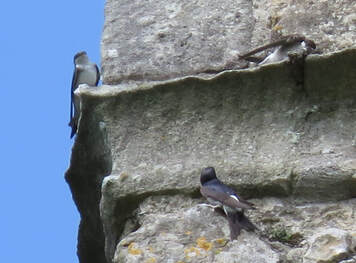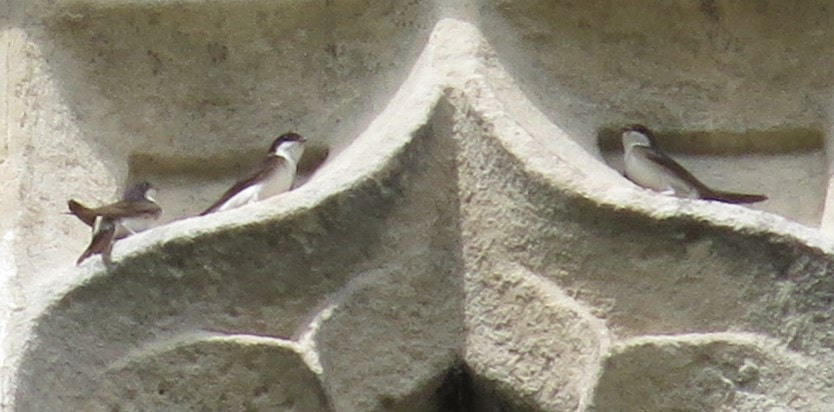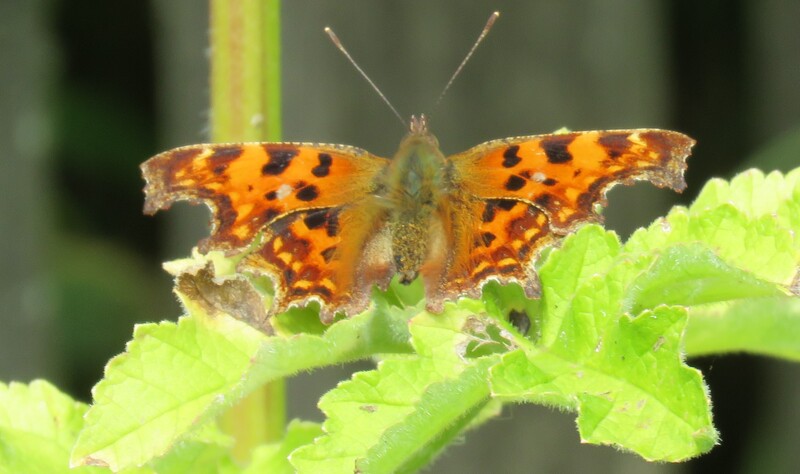 House martin muster on the tower at Sizergh Castle
House martin muster on the tower at Sizergh Castle On 18th August both house martin and swallow nests were silent and there were few hirundine in flight about the castle.
Today, 2nd September, house martin are gathering in a large pre-migratory flock and it's thrilling. They settle high on the south-facing facade of the castle and on this sunny morning their bright white plumage shows against the the limestone, pin-points of gleaming white against grey. The rough façade of stone resembles the cliff-faces where once house martin built their nests. A few clumps of daisies that spill down the castle steps have have set-seed high on the castle wall, with clumps of lichen. What are the house martin doing up there? Zooming-in on my images I can see some are preening. There will be insects in that rough stone facade so will they take them, or feed only on the wing?
My images of the day remind me of Breughels’ painting, Children’s Games, where there are quirky and perplexing things going on. Some birds cram themselves into niches half out of sight, the game is to find them and interpret their behaviour.
In July house martin and swallow were nesting close to each other. No sign of swallows today, I wonder where they’ve gone. And how many of today’s gathering house martin nested here at the castle. The changing behaviour and mix of hirundines through the breeding season is fascinating, and unresolved.
At Sizergh a gentleman looks up to the tower, notices the house martin and remembers Duncan and Banquo arriving at Macbeth's castle
Macbeth. Act 1 scene vi.
This guest of summer,
The temple-haunting martlet, does approve,
By his loved mansionry, that the heaven’s breath
Smells wooingly here: no jutty, frieze,
Buttress, nor coign of vantage, but this bird
Hath made his pendent bed and procreant cradle:
Where they most breed and haunt, I have observed,
The air is delicate
I've known the play as long as I can remember but I begin to realise that there is bird-lore hidden within Shakespeare's work. Almost casually, he is telling us that colonies of house martin build their nests on church towers and that it's a habitual and a welcome sight. In the late 17th century numbers look good.
I wonder if anyone knows the natural history of hirundine at Sizergh Castle, how long these birds have been the guests of summer here and whether they're recorded in the Annals of Sizergh Castle.

























 RSS Feed
RSS Feed